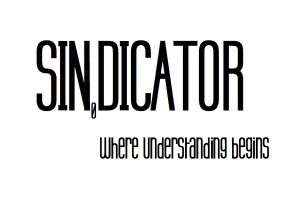Pop quiz, nerds! Chinese take their food seriously. Very. Seriously. How is that (s)indicated by policy? Today, we take a look at food security.
What does the PRC deem the “number one document”?
It’s a policy document issued every January by the Central Committee of the Communist Party. It sets the country’s policy priorities for the year.
The primary focus?
Number one’s number one has focused on rural matters every year since 2003, making China’s agricultural economy top priority. This year, like many years before, food security took precedence.
What the hell does “China needs to TAKE GOOD CONTROL OF ITS BOWL” mean?
It’s state-speak (via Xinhua and other party mouthpieces) taken from the document that posits, “Taking good control of its own bowl is a fundamental principle the government must stick to over a long period of time.” It emphasizes that the number one priority is to ensure that China can provide its people with adequate food supplies, focused on grain sufficiency. Food security is all about independence, or controlled interdependency in a global market. China’s campaign to “control its bowl” stems from pricing and shortage fears, seeking to insulate its people from internal and international volatility.
Food Security Measures: Then and Now
Early state measures protected food supplies for the good people of Communist China by… wait for it… ridding the country of sparrows. The flying pests were thought to be eating all the grain, so Mao instigated a campaign against the beasts and decimated the population. Naturally, the ecosystem responded with a huge bug problem, in which the crops were overrun with pests of a different kind, a contributing cause to the famine during the Great Leap Forward.
Now, China’s food security campaigns are a bit more sophisticated. The number one document focuses on agro-business, encouraging modern biotech and empowering farmers to maximize output.
Toxic Assets
But modern development in other sectors competes with the Committee’s land-loving, grain-hugging food security policies. China’s prolific urbanization has undercut these environmentally-friendly efforts and caused toxic levels of cadmium, lead, mercury, nickel, and arsenic to contaminate the water and soil.
For the first time ever, this year the Ministry of Environmental Protection and the Ministry of Land and Resources has publicly reported on state land in the country. The survey reveals almost one-fifth of Chinese soil is fallow. Three-point-three million hectares — an area the size of Belgium — has become too contaminated to grow crops! Still, the survey maintained China’s arable land is still above the self-proclaimed “red line” of 120 million hectares.
Those American Pigs
This year American pork producer Smithfield Foods was bought by China’s Shuanghui International Holdings Ltd. for $4.7 billion. It’s the largest takeover of a U.S. company by a Chinese firm ever. Diet changes for the Chinese, including an ever-growing demand for meat, has now led to outsourcing industrial pork production to the U.S. So this grain sufficiency thing has gone beyond filling bowls with rice. The buyout has transferred a water-intensive, grain depleting, environmentally taxing process to the States.
Opinions and predictions I’ll leave to the experts, but look out for part 2 and see how Shuanghui-Smithfield also plays into food safety in China.
Big Red, bringing home the bacon! Mmmm. Bacon.
Read on!
– This guy does a much better of explaining the “Number One Document” and its implications than I do.
– Listen to this NPR podcast on a perceived rice shortage in Asia and how everyone lost their goddamn MIND over it.
– Toxicity.
– Two examples why the U.S.-China food trade is more dramatic than your relationship with your ex:
– Bring us your fine swine.
– But we’ll pass on the corn.

















































